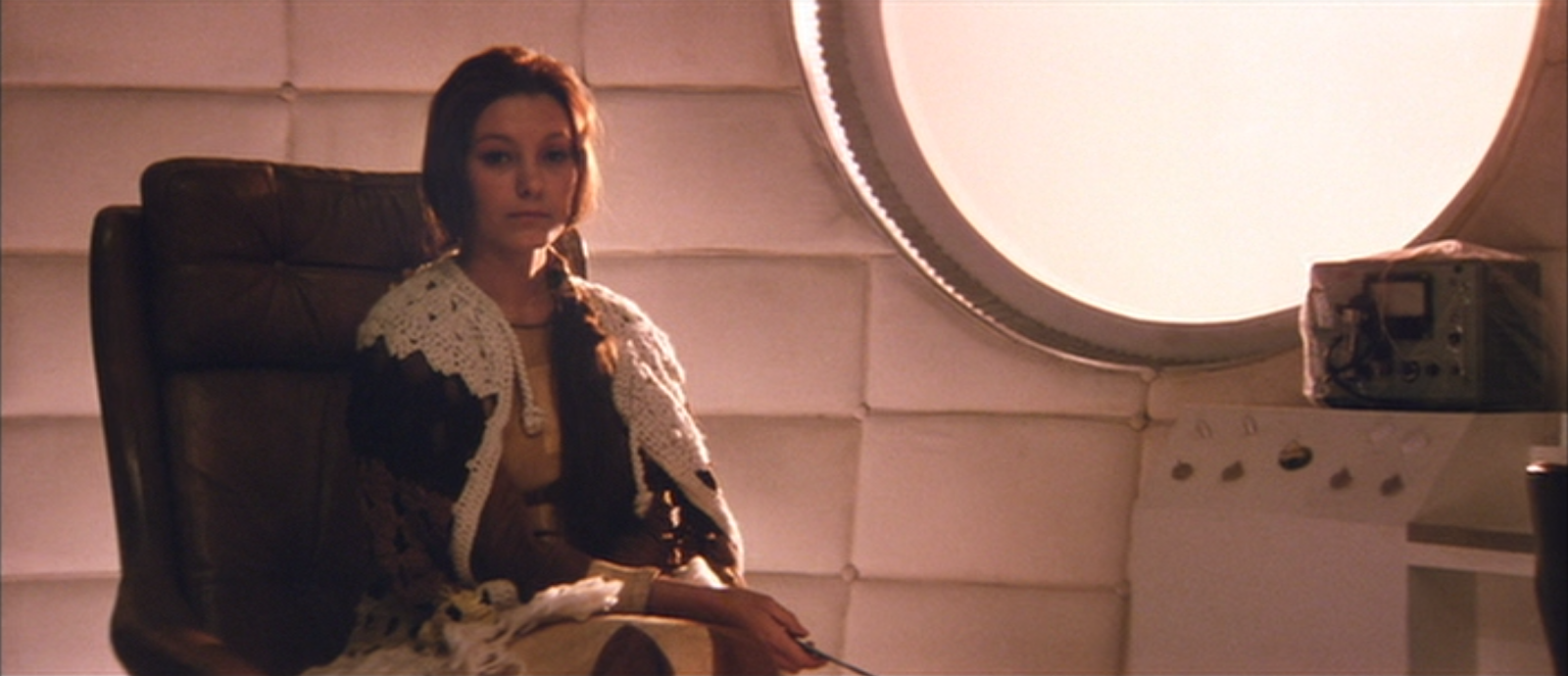I finally watched Andrei Tarkovsky's masterpiece "Solaris" in its entirety. When it was initially released, the film was widely compared to Stanley Kubrick's "2001: A Space Odyssey" (1968). Tarkovsky's future echoes some of the modernist design which can be found in "2001," but overall the future is less sterile in Tarkovsky's film; there are many shots which linger on the earth's countryside and sundry natural vignettes (as is typical of Tarkovsky), which are later echoed by the more exotic natural scenes from the planet Solaris, and Tarkovsky's future contains more remnants from mankind's past, which reminds us that the future is not only the new, but also the accumulation of history and culture.
The shot of the library shown above represents the most deliberately archaic aspect of the film; the space station's library seems to represent the inheritance of the past and human culture which has been brought into space, and which humans use to try to make sense of the new and the unknown. The most audacious example of Tarkovsky's deliberate archaism is the candelabra with lit candles that makes several appearances in this scene:
Because of its links to the past and to nature, Tarkovsky's imagined future feels grounded and real, despite the primitive special effects employed. The effects are primitive even by the standards of the day; the film's production seems hearkens back to the golden age of cinema, which is probably a reflection of the limited budgets and technical skill of the Mosfilm studio. While at least partly unintended, this actually contributes to the film's timeless feel.
The entirety of the film is available on the internet for free, but I watched the Criterion Collection Blu-Ray edition. Here is a clip which shows the famous levitation scene in the library:







No comments:
Post a Comment